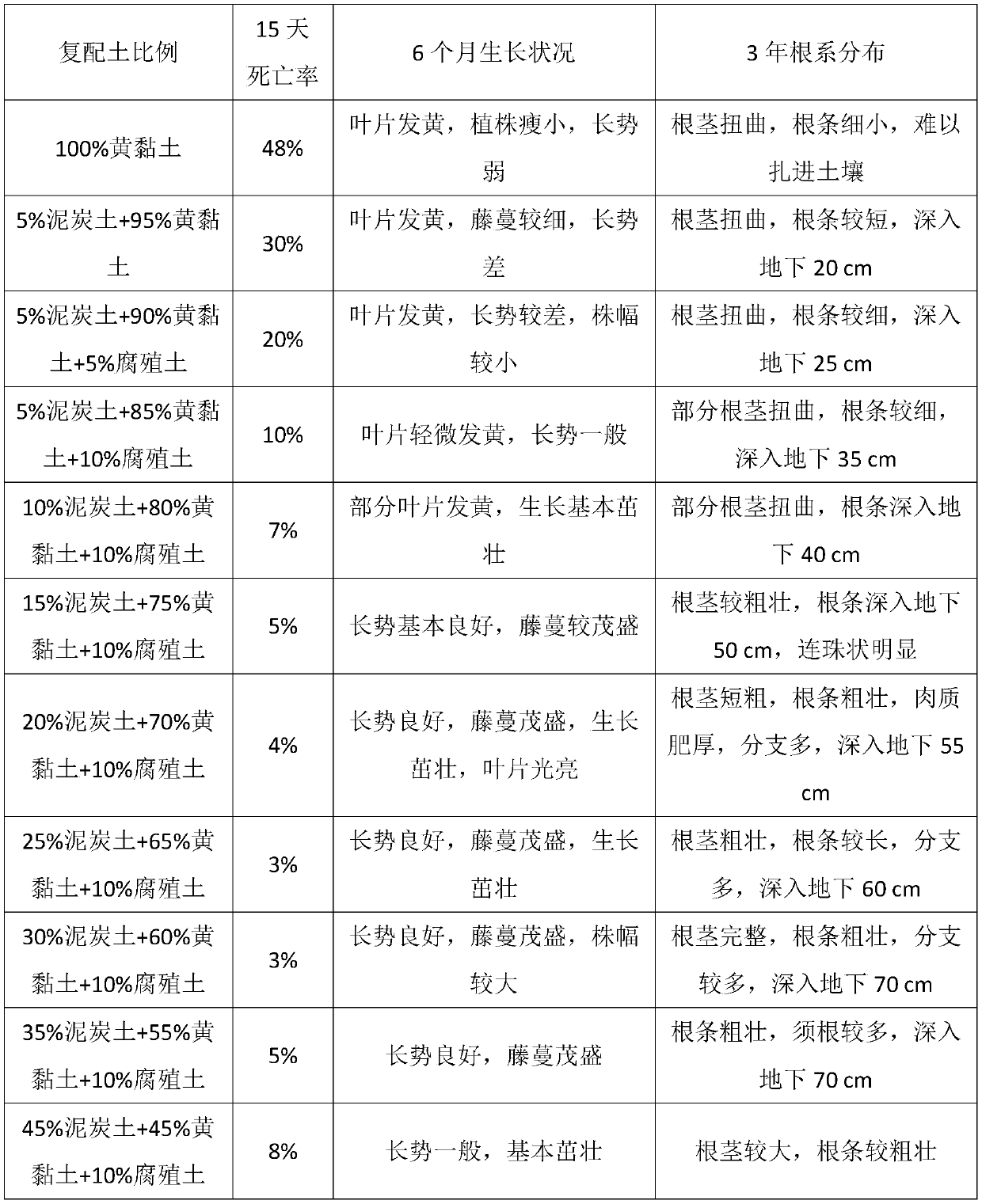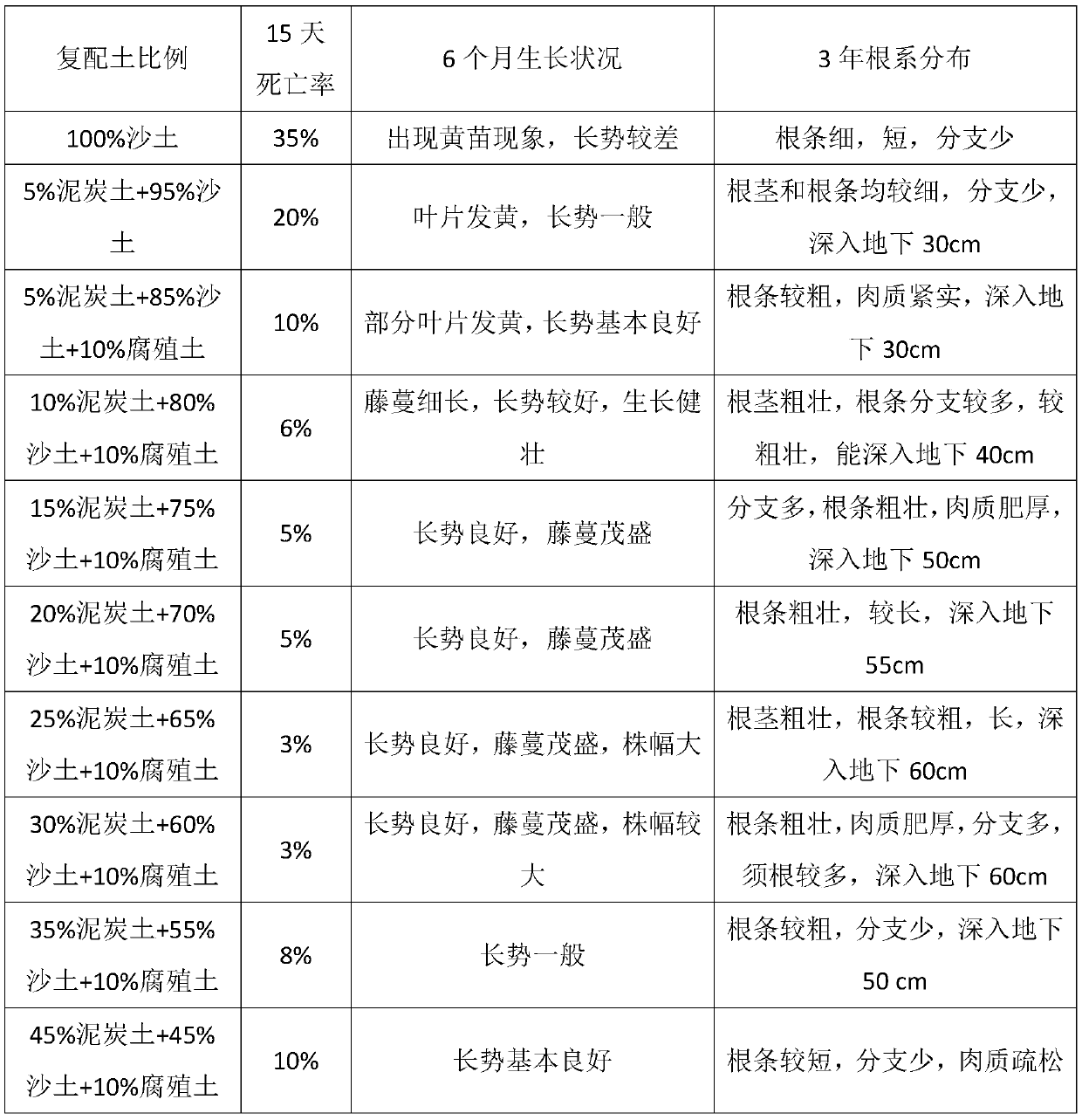Bagging planting method of morinda officinalis How
A planting method and technology of Morinda officinalis, which are applied in botanical equipment and methods, planting substrates, horticulture, etc., can solve problems such as unfavorable growth of Morinda officinalis, many diseases and insect pests of masson pine, time-consuming and laborious excavation, etc., so as to avoid soil erosion. , Improve uniformity and stability, and maintain the effect of soil fertility
- Summary
- Abstract
- Description
- Claims
- Application Information
AI Technical Summary
Problems solved by technology
Method used
Image
Examples
Embodiment 1
[0060] Implementation location: Guoyi Town, Getang Village, Taiping Town, Conghua District, Guangzhou City, Guangdong Province, with an annual sunshine duration of about 1661.5 hours, an annual average precipitation of 2089.6 mm, and an annual average temperature of 21.7 °C.
[0061] 1) Bagging: Make a non-woven planting bag with a height of 80 cm and a diameter of 30 cm, and fill the bag with yellow clay mixed with 15% peat soil and 10% humus;
[0062] 2) Planting: During the period from the first ten days of April to the middle of May, select the domesticated seedlings of Morinda officinalis with good growth, and transplant them in triangular holes, the distance between the plants is 15cm, and the depth of the holes is about 15cm; 3 plants per bag, 1 plant per hole, Cover with a layer of loose soil after compacting the soil;
[0063] 3) Shade: Set up a shade shed in the early stage of planting, and the canopy density can reach 70% to 80%. After the seedlings take root and su...
Embodiment 2
[0070] Implementation location: Guoyi Town, Getang Village, Taiping Town, Conghua District, Guangzhou City, Guangdong Province, with an annual sunshine duration of about 1661.5 hours, an annual average precipitation of 2089.6 mm, and an annual average temperature of 21.7 °C.
[0071] 1) Bagging: Make a non-woven planting bag with a height of 80m and a diameter of 30cm, and fill the bag with yellow clay mixed with 25% peat soil and 10% humus;
[0072] 2) Planting: During the period from the first ten days of April to the middle of May, select the domesticated seedlings of Morinda officinalis with good growth, and transplant them in triangular holes, the distance between the plants is 15cm, and the depth of the holes is about 15cm; 3 plants per bag, 1 plant per hole, Cover with a layer of loose soil after compacting the soil;
[0073] 3) Shade: Set up a shade shed in the early stage of planting, and the canopy density can reach 70% to 80%. After the seedlings take root and survi...
Embodiment 3
[0080] Implementation location: Guoyi Town, Getang Village, Taiping Town, Conghua District, Guangzhou City, Guangdong Province, with an annual sunshine duration of about 1661.5 hours, an annual average precipitation of 2089.6 mm, and an annual average temperature of 21.7 °C.
[0081] 1) Bagging: Make a non-woven planting bag with a height of 80m and a diameter of 30cm, and fill the bag with yellow clay mixed with 30% peat soil and 10% humus;
[0082] 2) Planting: During the period from the first ten days of April to the middle of May, select the domesticated seedlings of Morinda officinalis with good growth, and transplant them in triangular holes, the distance between the plants is 15cm, and the depth of the holes is about 15cm; 3 plants per bag, 1 plant per hole, Cover with a layer of loose soil after compacting the soil;
[0083] 3) Shade: Set up a shade shed in the early stage of planting, and the canopy density can reach 70% to 80%. After the seedlings take root and survi...
PUM
 Login to View More
Login to View More Abstract
Description
Claims
Application Information
 Login to View More
Login to View More - R&D
- Intellectual Property
- Life Sciences
- Materials
- Tech Scout
- Unparalleled Data Quality
- Higher Quality Content
- 60% Fewer Hallucinations
Browse by: Latest US Patents, China's latest patents, Technical Efficacy Thesaurus, Application Domain, Technology Topic, Popular Technical Reports.
© 2025 PatSnap. All rights reserved.Legal|Privacy policy|Modern Slavery Act Transparency Statement|Sitemap|About US| Contact US: help@patsnap.com


